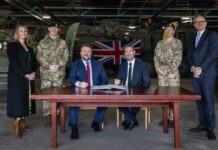This author’s original intention was to uncover some positive trends within the British Army at a time where it has repeatedly come under fire for various failures. However, this task has proven quite challenging.
Finding positive narratives at the current time requires a deep faith in the soundness of the institution and a willingness to ignore obvious problems.
To provide some context for our discussion, and to be fair, Britain is not alone in Europe in having let the capabilities of its ground forces decay since the end of the Cold War. However, unlike some of Britain’s peers, there is perhaps a larger gap between aspirations and reality. The British Government still seems to assume that it can commit its military anywhere at any time and somehow it will get the job done. All of this despite the fact that it has so far largely failed to properly fund, equip and sustain its military.
There is, of course, more to it than that – there have been many contributors to the current parlous state of the British Army. Indeed, there is a level of dysfunction which appears to afflict the British defence ecosystem in its entirety.
British Defence Ecosystem
To talk of a defence ecosystem would seem to suggest an integrated whole. Unfortunately, the British defence ecosystem would seem to amount to less than the sum of its parts. The players in the game are as follows; a government that provides strategic direction and policy, a Treasury that is supposed to pay for it, and a Ministry of Defence (MoD) that should manage it and make it a reality. Then there is the civil service whose role is to manage the reality as defined by government policy. In the British system, the bureaucracy is tasked with procurement and sustainment. At the end of the line comes the military, in the form of its three services branches, the Royal Navy (RN), Royal Air Force (RAF) and British Army.
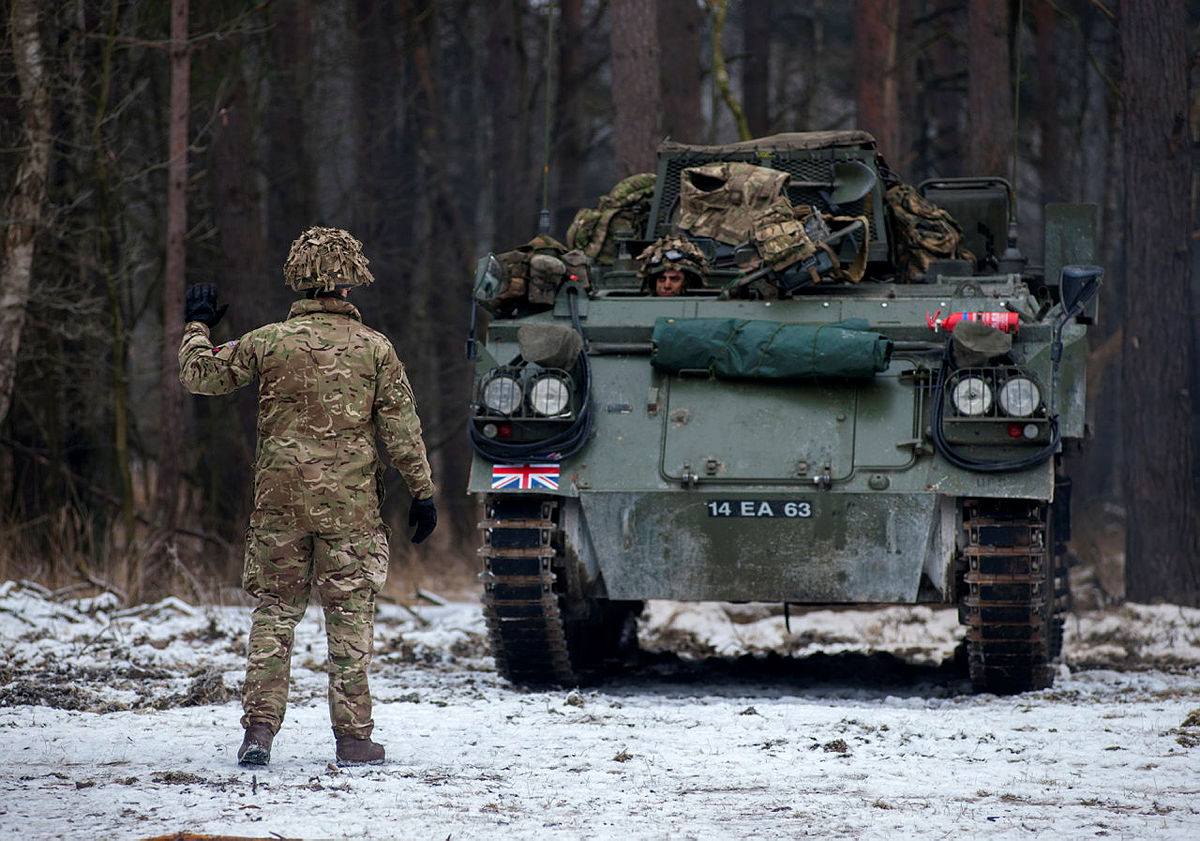
Credit: UK MoD
Another element of the defence ecosystem that has to be accounted for is the British defence industry. It does not require a tremendous leap of logic to see the wisdom in having a highly capable defence industry to supply and sustain equipment in service with the British military. Furthermore, having a capable defence industry offers the opportunity to penetrate export markets with the economic advantages that can bring, as well as the influence that can be gained in meeting the defence equipment needs of friendly nations.
Bearing that in mind, it makes sense that Britain has a defence industrial policy to sustain its domestic industry. In an era where talk of resilience and supply chains is paramount, having the ability to meet defence needs from local sources makes perfect sense. The two leading European nations in defence terms have for a considerable period of time been France and Britain. That situation could well change with Poland now becoming a European defence leader and Germany might yet put its defence house in order. Focusing on France and Britain for the moment, both make reference to the fact that they have a defence industrial policy. When France asserts that point it is hard to disagree, though sadly a British defence industrial policy is much, much harder to discern.
Britain’s Defence Industry
All across Europe in the post-Cold War world, it was inevitable that national defence industries could not remain as they were. Moreover, in an era of the ‘peace dividend’, national defence spending levels were continuously contracting. In turn, this led to a period of industrial consolidation, and initially this was on a national basis, before expanding to become a multinational phenomenon across Europe. Eventually in Britain, a defence industrial giant emerged in the form of BAE Systems, though sadly relations between the company, the British defence establishment, and the procurement authorities have not always been cordial. Mention should also be made of the other major pillar of the British aerospace and defence industry in the form of Rolls-Royce, which, much like BAE Systems, has transitioned to become a global company.
The word ‘global’ is important here, as globalisation has changed the industrial picture in Britain just as it has, to a lesser or greater extent, in other parts of Europe. Certainly, globalisation has been a significant contributor to the decline of manufacturing industry in Britain and inevitably that has impacted the British defence industry and its capabilities. Another contributing factor as far as land systems are concerned has been the limited scale of orders from the British Army. By way of example, confirmation of that trend can be seen from just looking at British armoured vehicle orders, or lack thereof, over the past 20 years. This trend is understood to have largely motivated BAE Systems’ sale of a 55% stake in its BAE Systems Land UK business segment to Rheinmetall, which resulted in Rheinmetall BAE Systems Land (RBSL).
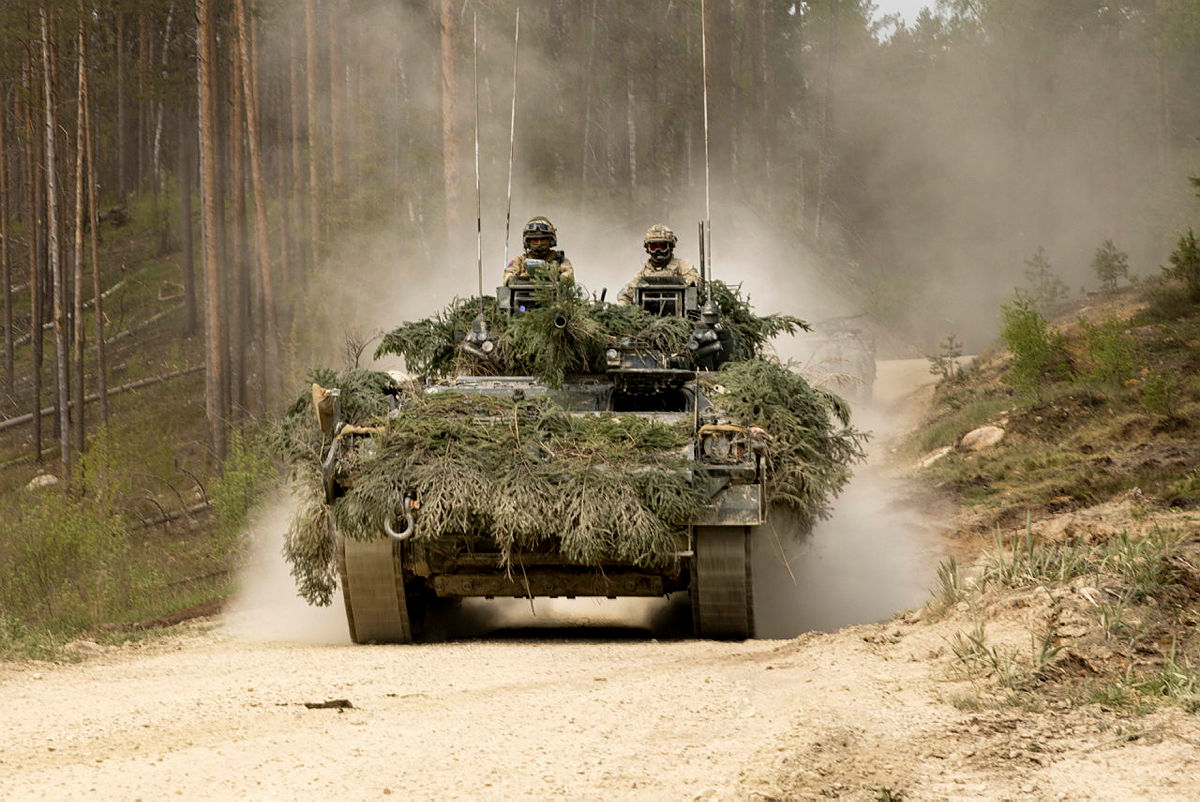
Credit: UK MoD
Britain still has tremendous skills to offer in the automotive sector, notably in highly specialised areas, but British car and truck manufacturers in this sector have broadly either gone bust or come under foreign ownership. Only one truck company remains in Britain, which is DAF, a Dutch company owned by US multinational Paccar. In terms of the British defence industry, capability has been sustained through foreign domiciled companies acquiring local companies. Italian, French, German, Israeli and US primes have all built a presence in Britain, often through acquisition of existing companies. Notable examples of the latter include Cobham, Inmarsat, Meggitt, Ultra Electronics, Meggitt, and a majority stake in Babcock purchased by US-based organisations, and Pearson Engineering purchased by Israel’s Rafael. Finally, one should not forget the emergence of transnational companies such as MBDA, with its joint ownership by Airbus, BAE Systems and Leonardo.
The British Government has never been protectionist as far as its defence industry is concerned, unlike other countries in Europe. Partially that is due to a free-trade mindset, and partially due to the fact that its post-Cold War leadership has never really seen sustaining a national defence industry as a critical issue. At an industrial and financial level, many British companies and financial institutions were never convinced that the defence sector was a lucrative investment and with government providing little evidence to the contrary, it is little wonder the British defence industry has shrunk.
The lack of a realistic industrial policy is an area that should have been addressed many years ago. Another issue that should also have been resolved is the procurement system as a whole, which involves the MoD, the civil service, the procurement bureaucracy, the end-user, and industry. Put simply, for many years Britain has not been very good at defence procurement. Cost overruns, multi-year delays, and programme cancellations became regular events. Few if any players in the British procurement scene emerge with any credit. Even worse, for all of the talk of reforming and improving defence procurement over the past few years, few if any success stories emerge.
Numbers and People
One increasingly controversial area for the British Army is personnel strength and the fear that the government is committed to reducing regular forces numbers to a level that is not adequate for the tasks to be performed. It appears that the government believes that an increased use of volunteer reserve personnel and an increased use of civilian contractors in support functions will be as effective and cost less than regular personnel.
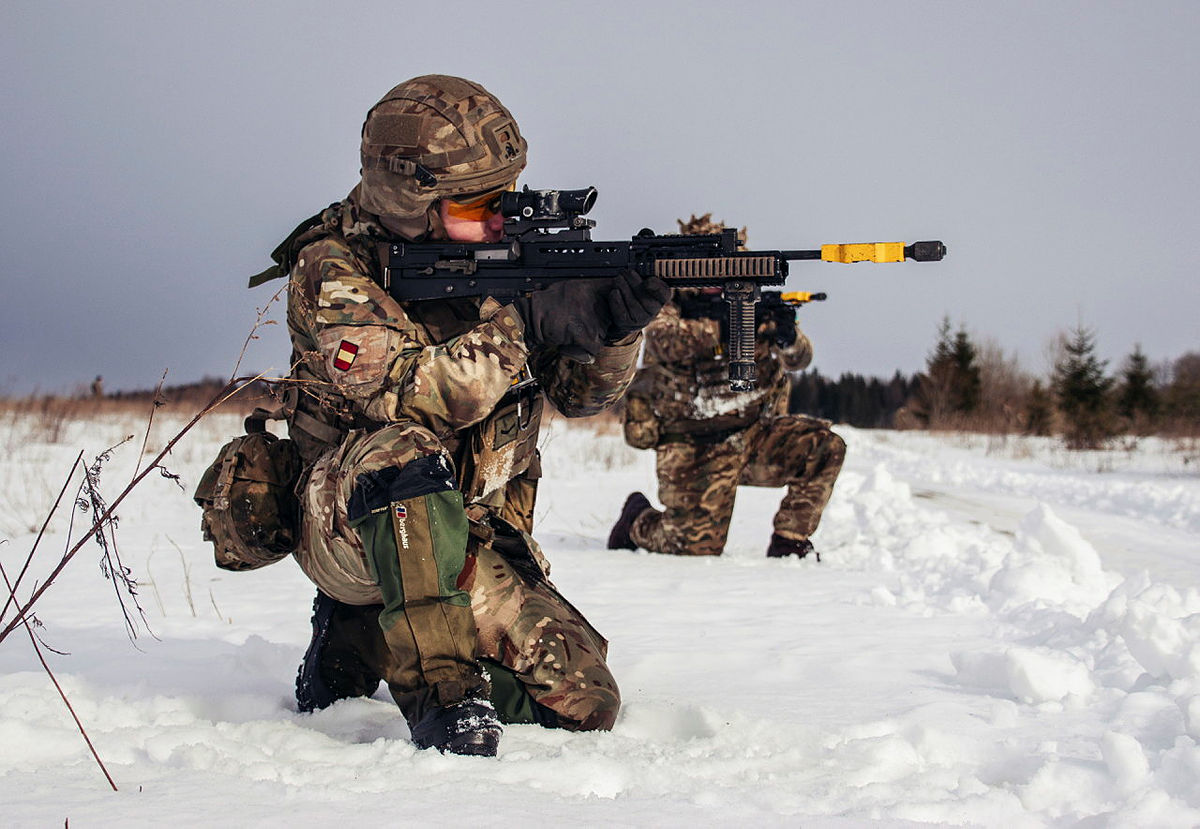
Credit: UK MoD
Research from the House of Commons Library on UK Defence Personnel Statistics published in August 2022 provides a picture of the strength of the British Army from 2012 to 2022 (up to 1 April 2022), as shown in Table 1 above. Table 2 utilises the Quarterly Personnel Statistics from the MoD as of 1 January 2023. Differences in numbers for regular personnel and the inclusion of the full strength of reserve forces can clearly be seen.
Table 1: British Army Personnel Strength 2012-2022
| Personnel /Year | 2015 | 2016 | 2017 | 2018 | 2019 | 2020 | 2021 | 2022 | |
| UK Regular Forces | 87,058 | 85,038 | 83,561 | 81,116 | 79,029 | 79,624 | 82,231 | 80,738 | |
| Gurkhas | 2,886 | 2,855 | 2,992 | 3,150 | 3,429 | 3,757 | 4,011 | 4,108 | |
| Full-Time Reserve Service* | 2,798 | 2,278 | 3,026 | 2,987 | 2,964 | 3,141 | 3,318 | 3,311 | |
| Note: The Full-Time Reserve Service heading covers reserve personnel currently on active service with the regular Army. | |||||||||
Table 2: MOD Quarterly Service Personnel Statistics, British Army, 1 January 2023
| Personnel/Year | 2020 | 2021 | 2022 | 2023 |
| UK Regular Forces | 78,620 | 80,810 | 80,980 | 78,060 |
| Gurkhas | 3,370 | 3,720 | 3,950 | 4,060 |
| Volunteer Reserve | 29,860 | 29,790 | 29,400 | 27,570 |
| Other Personnel | 4,180 | 4,310 | 4,600 | 4,520 |
According to MoD statistics, as of January 2023, the UK Regular Forces strength had declined by 3.6% from the year before, while over the same timespan the Volunteer Reserve strength had declined by 6.2%. Where the controversy arose was when reports of a reduction of regulars down to 72,000 or 72,500 surfaced, and more recently, a reduction in numbers down to 70,000 was suddenly being discussed. This culminated in a rupture in relations between the Defence Secretary Ben Wallace and the Chief of the General Staff (CGS) General Sir Patrick Sanders, who believed the cuts in headcount were too severe.
This has led to the CGS opting to retire early in 2024. Then in mid-July 2023, Wallace announced that he would resign as Defence Secretary in the next cabinet reshuffle and stand down as an MP before the next general election, and stood down from his ministerial post on 31 August 2023.
The MoD’s falling personnel strength numbers suggest there is a risk of increased reliance on reservists. However, given that reservist numbers are also falling, there is no guarantee that the plan to replace regulars with reservists will deliver. Then comes the issue of retention of regulars and here, decent pay, overall employment conditions and housing would certainly help. Sadly, taking military personnel for granted has long been a weakness of the British system.
The Broad Economic Outlook
While promises have been made for an increase in the defence spending as a percentage of Gross Domestic Product (GDP) of 2.25% by 2025 and up to 2.5% in the long-term, it does not mean that a new golden age for defence spending is at hand. In Britain, as in other countries around Europe, the impact of COVID-19 and price of recovery has been a massive increase in government spending and debt. Then you have the economic consequences of Russia’s invasion of Ukraine, another causal factor in the rise of inflation. This has brought a demand for wage increases, which risks leading to wage/price inflation that further worsens the economic situation.
The current negative economic environment calls into doubt any government promises on increased defence expenditure. The recent government offer of increased pay for the military of 5% and a GBP 1,000 bonus will not come from new funding, but rather from within the existing defence budget. This means that the funds will have to be taken at the expense of something else.
Improving the economic trajectory of the country appears to be beyond the current government. Unless they manage to achieve a spectacular change of fortune and can convince the electorate that they have not run out of ideas, polling suggests that they are on track to lose the next general election. One of the few certainties is that a new government will hold a defence review and that puts current budgets and programmes at risk.
For once, the problems with the defence procurement system are now being treated as a serious issue at the political level. The catalyst for this was the Sheldon Review released in June. Clive Sheldon KC was commissioned to lead the Ajax Lessons Learned Review with the objective to identify lessons from this programme and “make recommendations to help [the] Ministry of Defence (MoD) deliver major programmes more effectively in future.”
Soon after, the House of Commons Defence Committee noted that the Sheldon Review had “found that a number of systemic issues within the defence procurement process.” Will this be enough for the current government to make progress on defence procurement reform? Or will that be a task for the next government? Or will nothing really change? As painful as it may be to admit, the latter may be a distinct possibility when one considers that the next government will have numerous competing priorities calling for greater investment, including healthcare, housing, and education. Competing with these for funding may be a tall order.
Looking Ahead
What is clear is that things cannot continue as before, and this applies especially to the British Army, which has arguably seen the greatest capability reduction among all three service branches. In terms of funding, the Army must be able to fight for its fair share of the budget against the RN and the RAF. Once it has this share, it must demonstrate it can define the equipment that it needs and participate in an effective procurement process to ensure that this equipment is delivered with the appropriate capability at the desired time.
Admittedly, it is extraordinarily difficult to specify equipment when there is very little clarity, and in a strategic sense, to identify the primary mission of the service branch. For years, the Army’s primary mission was the British Army of the Rhine (BAOR), but with the end of the Cold War, it became about peacekeeping/peacemaking, and later evolved into being drawn into asymmetric conflicts in Afghanistan and Iraq. Since 2014 in Ukraine, with the Russian annexation of Crimea and conflict in the Donbas, and later the full-scale invasion in February 2022, the focus has shifted back to Europe.
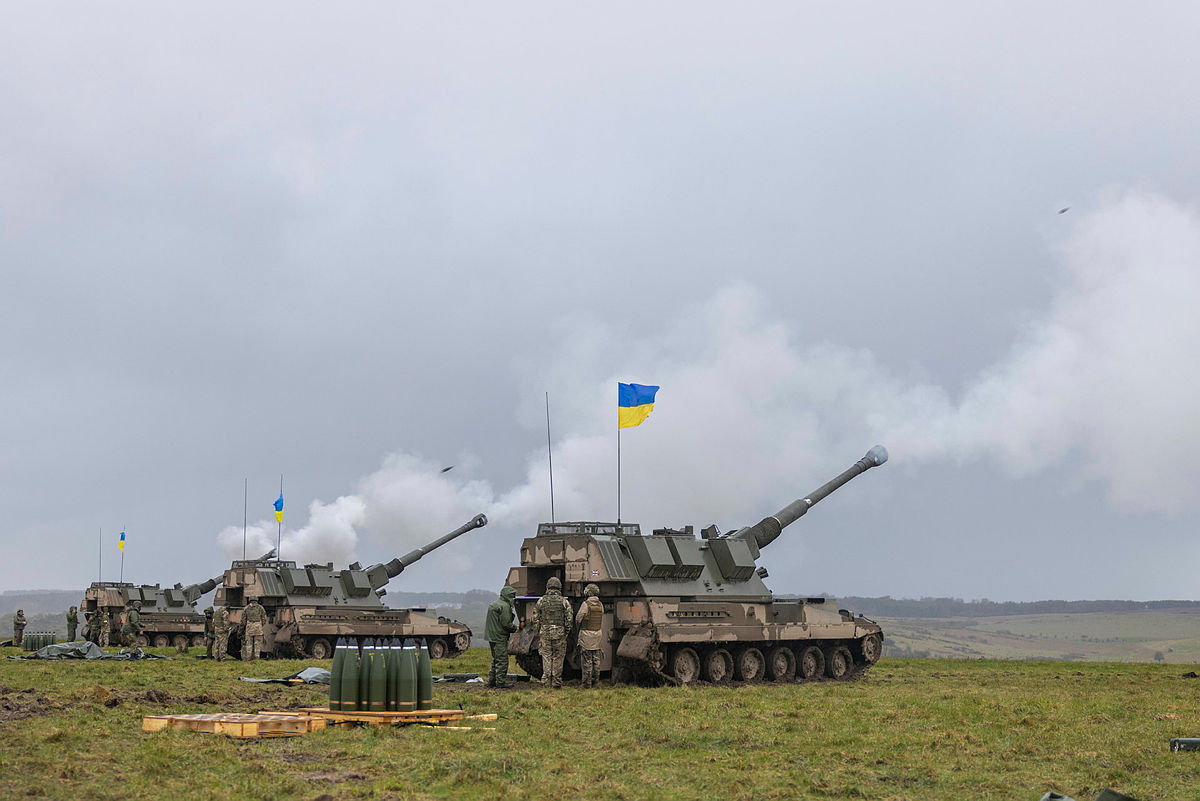
Credit: UK MoD
The reality is that if a resurgent Russia was seen as a threat post-2014, then the British Army was woefully unprepared to meet such a threat from a peer-level competitor. Although the war has demonstrated numerous weaknesses in the Russian armed forces, to a great extent it has done much the same for Ukraine’s allies. In the case of the UK, it laid bare that the country was limited in terms of tanks and armoured vehicles, with core artillery capabilities virtually non-existent, and as rapidly became apparent, ammunition stocks were far too low for high-intensity combat against a peer opponent. Thankfully, ammunition orders have now been placed to replenish British stockpiles, although whether this will actually provide the stocks necessary for modern high-intensity operations remains an open question.
So, is the future of the British Army now to be Europe-focused? Not quite would be the answer. The British Government seems wedded to a Global Response Force idea, which, according to the MoD, “Enables the UK to ‘get there first’, bringing together our deployed and high-readiness forces, and drawing on capabilities from all domains.” Bearing in mind the current fascination in British political circles with China and the Indo-Pacific, this begs a question, is Britain deluding itself by looking to take on board new global commitments, on top of its European commitments, at a time like this?
Are we asking too much of the British Army in its current state? Having a credible deterrent capability in Europe and now building a credible expeditionary capability will be a big ask. The danger is that the British Armed Forces may indeed be able to ‘get there first,’ but the fear would be will they have the tools necessary to deter or fight once they get wherever ‘there’ is? Pure reliance on allies to fill capability gaps cannot be a panacea here, since it reduces overall resilience, increases over-reliance on key units which cannot be easily replaced, and more broadly the capability mix among allies may not meet the requirements of the battlefield they find themselves upon. Moreover, if multilateral alliances are to serve as a credible deterrent, their members must all possess some a meaningful baseline level of capability. Something has to change.
David Saw



![Serve to lead Serve to lead. Officer Cadets march past the Old College building during their commissioning ceremony, known as Sovereign’s Parade. [Crown Copyright 2013]](https://euro-sd.com/wp-content/uploads/2025/09/S1-Kopie-218x150.jpg)



![Air-to-ground precision munitions: A market overview A SPEAR 3 test missile strikes its target during the first live fire test on 17 November 2024. [Crown Copyright 2024]](https://euro-sd.com/wp-content/uploads/2025/06/SPEAR_mini-cruise_missile_first_guided_firing__MBDA_2-Kopie-218x150.jpg)



